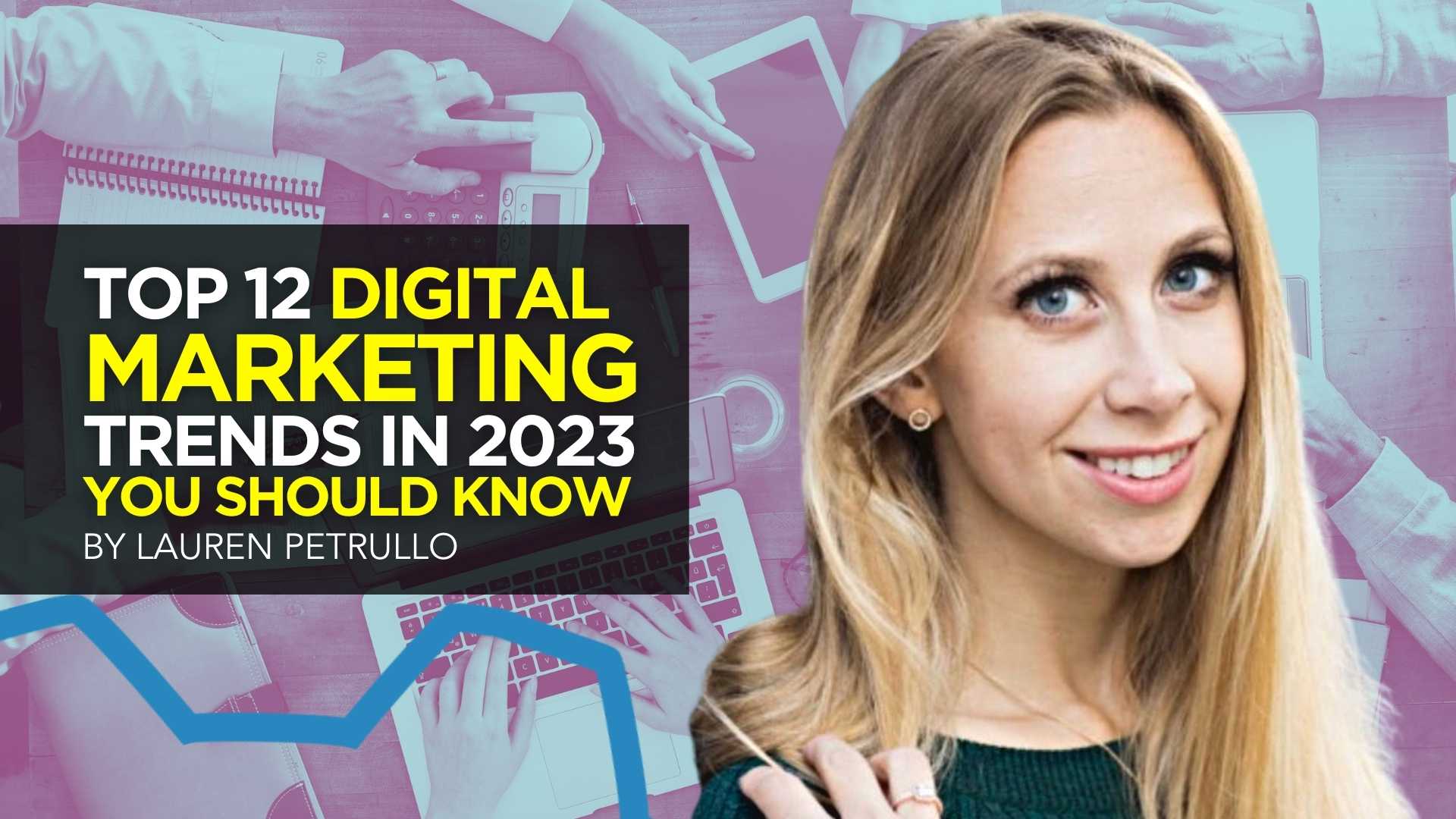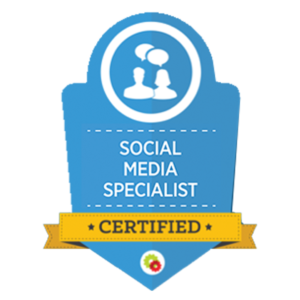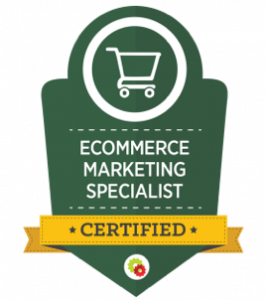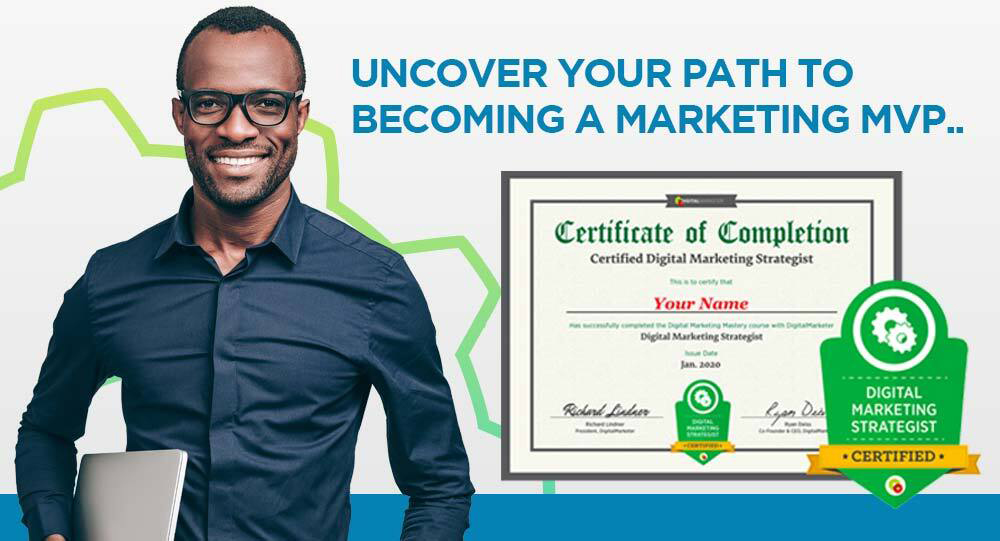MARKETING
Top 12 Digital Marketing Trends in 2023 You Should Know

The marketing and advertising landscape is constantly evolving. With the continuous emergence of new technologies and changes in consumer behavior, it’s super important to stay ahead of the curve by staying on top of the latest digital marketing trends.
But, as digital marketers or business owners, it can get a little challenging to catch up with everything happening so fast.
So, to help you get a head start and stay ahead of your competition, we, at Mongoose Media, created a comprehensive list of the top trends in digital advertising that any company should watch out for in 2023.
From advances in AI to leveraging content marketing and influencer collaborations, these strategies have the potential to amp up your marketing efforts and build a winning digital marketing strategy for your business.
So let’s take a deep dive into each one of them and help you become more strategic about how best to capitalize on modern technologies!
12 Top Digital Marketing Trends
Here is a list of the top digital marketing trends with detailed insights you need to pay attention to in 2023:
1. Artificial Intelligence & Machine Learning
The use of AI and machine learning is probably the most popular trend, which is gaining traction in digital marketing at the moment.

With algorithms controlling what social media posts you engage with, which search results surface, and even determining the ads that appear before your eyes, AI-driven marketing ensures a tailored experience for customers everywhere.
This amazing technology can help organizations optimize their marketing campaigns with predictive analytics and advanced data insights.
Plus, AI can also be used to automate mundane tasks such as content curation, customer segmentation, & personalization to facilitate better engagement with customers.
AI content creation tools such as Jasper, ChatGPT, and Midjourney are already revolutionizing how digital marketers create written content and images at 10x speed.
This is definitely going to be one of the hottest trends in advertising in the coming years.
2. Immersive Experiences
Immersive experiences are becoming an increasingly important part of digital marketing these days as they enable customers to interact with a brand on a more personal level.
Customers today don’t just want to browse through products. Instead, they look for an emotionally engaging experience that adds to their overall satisfaction.
Some of the best tools to offer immersive experiences are:
Virtual Reality – VR helps customers immerse themselves in a virtual environment and see what it would be like if the product was bought.

Are You Ready to Master Social Media?
Become a Certified Social Media Specialist and learn the newest strategies (by social platform) to draw organic traffic to your social media sites.
Augmented Reality – AR helps customers to virtually experience the product in their own physical environment.
Using AR and VR, marketers can create interactive video ads and pop-up stores where customers can try and interact with products before buying them.
And this is exactly what happens in the metaverse. It’s a virtual world where people have digital avatars, which they can use to interact with other people and visual projections of products, play games, participate in virtual events, and buy or sell virtual assets.
This might sound unreal, but it’s all happening. As a matter of fact, brands like IKEA, Nike, and Amazon are already using AR to offer such virtual product experiences.
Immersive experiences like these create an interactive, real-world-like environment for customers to explore and gain insights about products/services, enhancing the user experience.
3. Content Marketing
Content is said to be “king” and definitely one of the most powerful digital marketing channels for engaging customers and driving conversions.
However, besides increasing engagement and conversion, content marketing is essential for another strong reason: brand awareness.
Did you know that it takes an average user 5 to 7 instances of interaction before they can remember a brand?
This is why it’s important to consistently create high-quality content that resonates with the target audience and helps them get to know your business better.

Content marketing should be an integrated part of any digital marketing strategy in order to build brand awareness, generate leads, and increase conversions.
In addition to traditional content such as blog posts, emails, and social media posts, marketers should also consider creating interactive content such as webinars, live product reviews, quizzes, and polls in order to increase engagement.
All of these make for an excellent customer experience and build long-term brand loyalty.
4. Chatbots & Voice Assistants
Chatbots and voice assistants are gaining prominence as they help companies provide a more personalized experience for customers.
Chatbots use AI-driven algorithms to provide personalized customer service with automated responses, while voice assistants interact with customers in a more natural way.
Both chatbots and voice assistants help organizations save time and money by automating mundane customer service tasks while providing a more personalized experience for customers.
Doing so, they help customers pass through the sales funnel in a personalized and immersive way, which ultimately helps drive more conversions.
This is why these two have become essential tools of conversational marketing in the modern digital marketing world.
5. Influencer Collaborations
Every day, you see content creators promoting clothes, accessories, tech gadgets, or any other product. Whether it’s an Instagram post, Facebook story, or a TikTok or YouTube video, you will come across such collaborations.

What does it tell you?
It tells you that influencer marketing is an essential part of digital marketing today.
Influencers can help create buzz around a product or service on different social media platforms, attract more people to your website, and drive conversions.
How?
The explanation is simple; customers today are more likely to trust an influencer than a brand when it comes to recommendations.
This is why many brands and organizations have started leveraging influencer collaborations and making them a vital part of their digital marketing efforts.
Besides more awareness, businesses can also use influencer collaborations to get honest reviews from trusted figures in the industry before they launch their product or service.
6. Live Video/Streaming
Live streaming is yet another powerful form of digital marketing and a hot trend in the digital advertising world.
Streaming live content allows brands to engage with their customers in real time and build a strong connection with them. Plus, it also helps customers get answers to their queries and encourages more conversations around the product/service.
Brands can stream live content on various social media platforms such as YouTube, Facebook, Twitter, and Instagram. This can be in the form of product demonstrations, Q&A sessions, webinars, interviews with industry experts, and more.

But why is it recommended?
Because the algorithm of most social media platforms pushes live content to its news feed and ranks it higher than older content.
This means it will be easier for brands to reach their target customers with live content.
And it’s not just all in theory.
Live commerce is a whole new industry that has gained huge traction in China and is slowly spreading to other regions.
In 2023, the total live commerce market in China is projected to cross $700 billion.
Imagine the impact you can have if ecommerce brands add it to their digital marketing activities.
7. Email Marketing
There may come a hundred new trends in digital advertising, but email marketing is the “never-gonna-die” classic digital strategy.
Even today, in 2023, it remains one of the most effective ways to reach customers and promote products/services.
Why? Because it’s a more direct marketing tool as compared to other tools like Google ads, sponsored posts in social media feeds, or TV ads.
Emails are highly targeted and personalized messages.

This is why businesses (especially ecommerce businesses) use email campaigns to build relationships with customers, announce new product launches and upcoming sales, offer content upgrades, and send other personalized messages.
It is a cost-effective way to reach out to existing and potential customers, build long-term relationships, and drive more sales.
8. Omni-present Social Media Marketing
No doubt, social media has become an integral part of digital marketing.
However, just a few years ago, only Facebook was the key platform for brands.
But now, many businesses are focusing on developing an omnipresent social media marketing strategy.
This means they now try to be present on every social media platform. From Instagram to Twitter, YouTube, Snapchat, TikTok, and even Pinterest, businesses have started creating their presence on all these platforms.
This omnipresence helps brands ensure that their content reaches a wider audience and is visible in multiple places. This increases brand awareness, encourages more customer engagement, and helps increase conversion rates.
9. Short Form Video Content
It’s no surprise that video content has become one of the most popular forms of digital marketing.
But what’s different today is the type of videos being created. Users no longer want to watch long videos and instead wish to consume content in short bursts.

This is why TikTok rose to fame and became the most popular app in 2019 and 2020.
TikTok’s popularity moved businesses towards creating short, eye-catching videos for social media marketing. These videos range from product/service demonstrations to funny skits and even customer testimonials.
However, what happened afterward is even more interesting.
After the meteoric rise of TikTok, Facebook and Instagram introduced “Reels,” and YouTube launched “Shorts.”
Why?
Simply because short videos are effective; they are great for grabbing the attention of viewers, quickly conveying a message, and engaging customers in an interactive way.
So, short video content is a hot digital marketing trend, which is here to stay!
10. LinkedIn
This might come as a surprise, but LinkedIn is now one of the most important platforms for marketing teams.
It is no longer a site for job hunting, business to business collaborations, or data collection. In fact, it has become a hub for individuals and businesses to share digital content in the form of short posts, blog posts, images, and videos.
Entrepreneurs, solopreneurs, and business profiles can use the platform to post relevant content and reach out to their target audience, build relationships with potential customers, and generate leads.

Become A Certified E-Commerce Marketing Master
The Industry’s Most Comprehensive E-Commerce Marketing Certification For The Modern Marketer. Turn Products Into Profit, Browsers Into Buyers, & Past Purchasers Into Life-Long Customers.
Plus, you can direct all of your followers to your website and get free organic traffic.
So, if you have not yet started using LinkedIn for digital marketing purposes, now is the time to do it.
It’s definitely going to be one of the top trends in advertising in the near future.
11. Voice Search
With voice search becoming increasingly popular, digital marketers need to factor this in while creating their marketing strategies.
Voice search is, essentially, the process of using voice commands to search for something on the internet.
For example, if you wanted to know about a local restaurant, you would say something like, “Find me a good restaurant near me,” and the voice assistant would display the best results based on your query.
This has now become one of the most popular ways to search, and businesses must create strategies that include voice search optimization.
This means optimizing your content, website, and other marketing materials for voice search. This will help you appear higher in the results when someone uses voice search to look for something that your business offers.
12. Inclusive Marketing
Finally, there is the concept of inclusive marketing, which is becoming increasingly important for businesses.

Inclusive marketing refers to creating content and campaigns that are sensitive to people of all backgrounds and cultures, regardless of gender, physical ability, sexual orientation, age, or race.
This is important because it allows businesses to create content that resonates with a wider audience and reach out to customers who may have felt excluded in the past.
Furthermore, it helps create an environment where everyone can feel included and accepted, which can be beneficial for businesses in the long run.
So, these are some of the most promising 2023 trends in digital advertising that businesses should look out for.
Remember, these trends will not be the same for all businesses. You should take the time to analyze your own business and create strategies that are tailored to its needs and goals.
Not sure what your business really needs? This social media certificate can help bring clarity.
Or, work with an expert and experienced digital marketing team to help make the right decisions for your business.
Either way, make sure to stay up-to-date with the latest digital marketing trends and capitalize on them while they’re still hot.


















